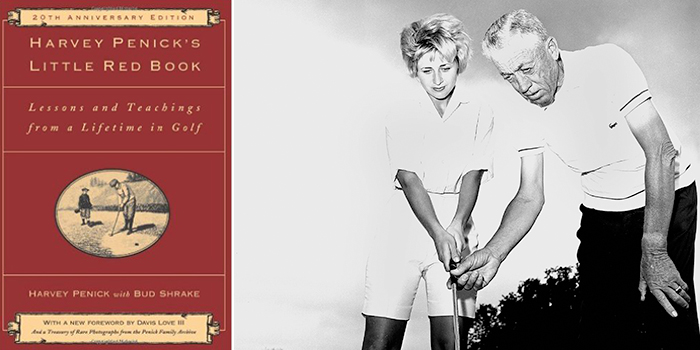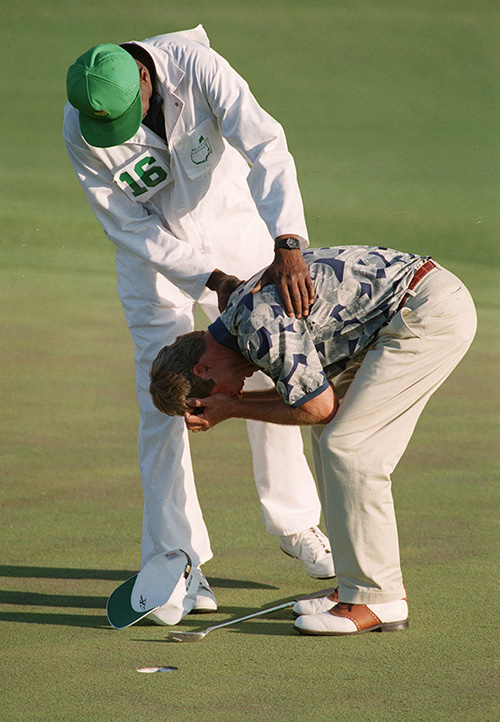The man widely considered golf’s greatest teacher usually charged only $5 for a lesson. Harvey Penick was the head pro and an instructor at Austin Country Club in Texas for more than fifty years, and he was known for his humble, generous approach to both golf and life. Among his most avowed students was Texan Ben Crenshaw, who won an emotional 1995 Masters tournament just days after Penick’s death. Today, Penick’s Little Red Book is still considered required reading for fans of the game.

From left: Harvey Penick’s book of golf advice; Sandra Palmer and Penick in 1964.
“When Harvey’s Little Red Book came out, no one had read anything like it,” says Kevin Robbins, a University of Texas at Austin senior lecturer whose book, Harvey Penick: The Life and Wisdom of the Man Who Wrote the Book on Golf, is the first-ever biography of the beloved coach. “It was a time when golf instruction was entering a time of unparalleled complication with videos and gadgets. And along comes this 87-year-old man from Texas, saying things like ‘Take dead aim’ and ‘You want the ball to go in the hole as quiet as a mouse.’ The world was uniquely ready to hear Harvey.”

Today, Harvey Penick’s sage advice still resonates.
1. Remember your fundamentals.
Golf comes down to basics. Penick believed gripping the club correctly (especially on windy Texas golf courses) was the main thing that set good golfers apart. “He did not mandate a certain way of doing things, but the grip, stance, and alignment of the ball needed to fit the player involved,” Robbins says. “He believed that once you had the basics down, a lot of work takes care of itself.”
2. Take time before making a statement.
Sometimes, Penick wouldn’t say anything for an entire lesson. “Think about the self-confidence it takes to give a lesson in which you say nothing,” Robbins says. “That was the way that he did things—a lot of listening and a lot of watching.” He might give a student a single drill or direction and then let them work through it for an hour. He believed that talking—and even thinking—too much got in the way of a natural swing.

Photo: Courtesy of Crenshaw/Sayers Archives
Carl Jackson supports an emotional Ben Crenshaw after his 1995 Masters win.
3. Start small and build.
Penick started his lessons close to the hole on the putting green, and then moved out to chipping and eventually tee shots. “For the short putt six inches from the cup, you’re going to feel instant success and accomplishment,” Robbins says. “Harvey wanted people to feel good about the way they played golf and then build on their skills.”
4. Drop the negativity.
“Harvey was blunt, just an unvarnished guy,” Robbins says. “He wasn’t polished or political, and I don’t think he believed in dancing around things.” But he always tried to speak in positive phrases. Instead of “Don’t crouch over,” he would say, “Why don’t you try standing little upright?” By speaking in a positive, active voice, he motivated his students to improve.
5. Take dead aim.
This was Penick’s philosophy in life and golf: Keep your mind 100 percent focused on your target. “‘Take dead aim’ was his personal motto, what he’s known for,” Robbins says. “In the twenty years since his Little Red Book was published, he’s taken on a Zen-like mythology, and people have applied their own meaning to it: You get up in the morning and you have goals—whatever they are, it means being absolutely unequivocally focused.”







